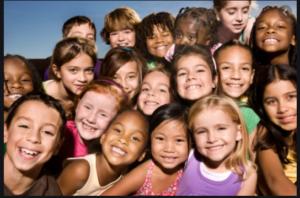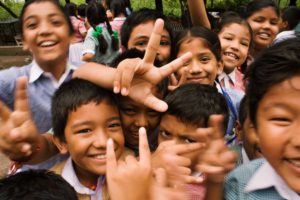Realizing America’s Promise
by Hal A. Lawson
Demography is not destiny, i.e., children’s circumstances at birth do not necessarily predict their outcomes as adults. This is America’s constitutional promise, and it applies to everyone, everywhere in the U.S. Our education systems are the main ways that we deliver on this promise.
John Dewey realized, though, that the fates of democracy and public education are intertwined. Strong democracy is impossible, he taught, without an education system founded on common purpose and shared values, while the education system sustains and advances democracy.
In these ways and others, American history can be told in part by the progressive development of public K-12 school systems alongside private ones. The best analyses of K-12 education systems pay special attention to companion systems of higher education and, more recently, early childhood education and birth-to-age three programs (Pre-K).
While each component of the system is important, their potential for realizing America’s promise requires that they be “joined up.” Cradle-to-career education systems such as Ready-by-21, STRIVE Together, and The Harlem Children’s Zone are structured to facilitate educational opportunity, occupational development, and upward social mobility. They are fit for purpose in a global economy in which jobs and military service increasingly rely on P-12 school systems that prepare college- and career-ready young people.
But all such praiseworthy cradle-to-career education systems are still in their infancy, and they are not universally available. One reason is that state policy and governmental restructuring have not kept pace with developments in education. The compelling idea of “all one system” in support of America’s promise to its most precious and vulnerable citizens depends in part on governmental realignment in support of a unified, coherent, and effective education system—from cradle to career.
Some of those who advocate for a cradle-to-career system employ a pipeline metaphor. Although this metaphor has its advantages, it suggests a stand-alone education system in which educators at each level of the system shoulder primary responsibility for young people’s attendance, on-time arrival, academic and school engagement, access to and readiness for knowledge, and graduation, paving the way for meaningful employment and civic engagement.
NYKids’ research-based case studies of schools called “positive outliers”—because they achieve special outcomes with diverse students—offer salient lessons learned from which other schools can benefit. For example, educators in positive outliers share what can be called “an improvement mindset.” Good is not good enough for them. In this way and others, these educators are local stewards for America’s Promise, and their schools offer exemplars for typically performing schools. Toward this end, NYKids has sponsored school-based networking and exchange systems in which educators learn and improve together, guided by a framework called COMPASS-AIM.
An Unfinished Agenda Punctuated by the Current Events
Fast forward to today’s world: Two disruptions have impacted everyone and everything. The COVID-19 pandemic is transforming schooling, if only in the near term, while the adverse experiences of African-Americans with local police are highlighting needs for reform in the criminal justice systems.
These events have proven to be a combustible mix. Civil rights guaranteed  by the Constitution (e.g., the right to organize and protest) have been rekindled as demonstrators from all walks of life have demanded fair and equal treatment under the law. Pervasive, structural inequality again has been laid bare, providing fresh reminders that we cannot let demography predict poor, diverse kids’ destinies.
by the Constitution (e.g., the right to organize and protest) have been rekindled as demonstrators from all walks of life have demanded fair and equal treatment under the law. Pervasive, structural inequality again has been laid bare, providing fresh reminders that we cannot let demography predict poor, diverse kids’ destinies.
Education systems—early childhood, K-12, and postsecondary—must play key roles in our renewed efforts to address these challenges. In the words of a university president: As America’s social fabric seemingly is being torn apart, education systems must be societal weavers. Adding to the challenge, the work to be done is shrouded in uncertainty and complexity.
Ready or Not, Educators, Here They Come
No one really knows how many young people are experiencing learning lags during the pandemic. Despite heroic efforts by educators and community partners to bridge the digital divide, uncertainties remain about how many young people have access to, and can benefit from, technology-delivered instruction. No one knows how many older siblings are providing childcare for younger children. Nobody knows how many children and parents are experiencing mental health challenges or whether these challenges are connected to alcohol and drug abuse. No one knows the full measure of underemployment and unemployment or the extent of pre-pandemic housing stress and food insecurity in rural, inner-ring suburban, and urban places challenged by poverty, social exclusion, and social isolation.
This much is clear. When school starts again and buildings reopen, three enduring assumptions will be tested.
- That all children are coming to school ready and able to learn
- That all schools are ready to support the learning and healthy development of all children
- That stand-alone schools configured in a pipeline can ensure that demography is not destiny.
What Else Is Needed?
When child and family poverty, social exclusion, and social isolation cluster in identifiable schools and communities, educators working alone are limited in what they can achieve. An expanded agenda starts with solid working relationships among schools and community/county agencies, particularly mental health, substance abuse, and child welfare systems, which are responsible for child abuse and neglect. In turn, these solid working relationships require, in turn, cross-boundary policy integration mechanisms.
In other words, bridges need to be built across the current divides of education policy, physical and mental health policy, child and family services policy, juvenile justice policy, and economic development policy. This is a daunting agenda, but one has to wonder how we will possibly be able to achieve America’s agenda for social, economic and educational justice without it.
Three Distinctions as Navigational Aids
All hands need to be on deck as educators and their partners chart uncertain, stormy societal seas toward desirable destinations. Partners include young people, parents/caregivers, community leaders, county officials, and state education department representatives.
Now more than ever, language matters, as we face the work that lies ahead. The words we use reflect how we think and structure our interactions, and when we seek change for the better, our language improves our thinking. Three pairs of words offer a starter kit of terms to consider and influence our thinking and language:
One is the consequential distinction between dialogue and debate. Dialogue is structured to facilitate mutual understanding. Changes in attitude and behavior may or may not come later. Debate, in contrast, is framed by power and authority dynamics; it typically introduces conflict and proceeds with the assumption that there will be winners and losers. The choice between the two is consequential for everyone.
Equality and equity comprise the second pair. Equality connotes sameness and efforts to create and sustain it. Its use is usually is reserved for opportunity structures and pathways. Equity, on the other hand, refers to standards of fairness and justice. It is implicated when we ask the distributive question: Who gets what, how much, when, where, and why—and what are the outcomes? All schools and cradle-to-career systems can be evaluated with regard to their equity—their fairness and legitimacy—in the game of life.
The third pair, disproportionality and disparity, frames research evidence regarding the life course developmental trajectories and outcomes for African-Americans, multi-ethnic Latinos and Latinas, and Native Americans.
Disproportionality refers to the ratio between the percentage of persons in a racial or ethnic group who have had an undesirable experience in comparison to this group’s demographic contribution to the overall population. For example, disproportionality for African-Americans includes assignment to special education; attending a school with high poverty rates as well as high student and educator turnover; juvenile justice system involvement; child welfare system involvement, including out-of-home placements in foster care; mental health challenges, including some that are connected to substance abuse; substance-exposed newborns; mother’s prenatal problems and infant mortality; health problems such as smoking and obesity; housing stress and food insecurity; and long-term underemployment and unemployment.
While disproportionality refers to conditions and circumstances, disparities  designates the short- and long-term outcomes associated with unfair treatment and sub-optimal circumstances. Longitudinal research focused on the short- and long-term effects of adverse childhood experiences (ACEs)—signaled by disproportionality—highlights some of the undesirable outcomes. For example, instead of a cradle-to-career system, a school-to-prison pipeline might develop. What is more, ACEs-impacted adults have preventable diseases and disabilities, die prematurely because of health maladies, encounter employment challenges, and may have children whose adverse experiences threaten to repeat the cycle.
designates the short- and long-term outcomes associated with unfair treatment and sub-optimal circumstances. Longitudinal research focused on the short- and long-term effects of adverse childhood experiences (ACEs)—signaled by disproportionality—highlights some of the undesirable outcomes. For example, instead of a cradle-to-career system, a school-to-prison pipeline might develop. What is more, ACEs-impacted adults have preventable diseases and disabilities, die prematurely because of health maladies, encounter employment challenges, and may have children whose adverse experiences threaten to repeat the cycle.
All such patterns indicating disproportionality and disparate outcomes have import for educators and their partners. To improve outcomes, educators in stand-alone schools configured in cradle-to-career pipelines need family, community and policy supports and resources — even more so after the pandemic and the strengthened Black Lives Matter movement.
A Choice Between Two Sets of Metaphors
Metaphors are mechanisms for “seeing as.” They are called “generative” because they exert a powerful influence on cognition, language and action.
The aforementioned education pipeline is a generative metaphor. It connotes a stand-alone education system in which educators mostly work alone.
Educational opportunity pathways offer an alternative metaphor, which serves as a reminder of collective responsibility for the realization of America’s Promise. This one draws on what we know about upward mobility patterns for first generation college students, including young people’s lack of knowledge about, and role models for, path-departing career choices. Many will change their minds as they gain experience and receive more career guidance. In brief, their educational and career trajectories are non-linear.
Another metaphorical choice provides a suitable way to conclude. For most of the 20th Century, American policymakers were guided by a melting pot metaphor; cultural assimilation was the guiding force. But diverse Americans, young and old, rich and poor, have exercised their civil rights when they have proclaimed: “We don’t want to be placed in your pot, and we don’t melt.”
The American rainbow provides a metaphorical alternative, and it may serve as a source of hope and inspiration. Every color is consequential for the rainbow’s structure and meaning. The greater the diversity, the more profound and beautiful the rainbow. Take any of it away, and you diminish the rainbow’s beauty, stature, and symbolism for life and living. It provides a beautiful, compelling metaphor for the complicated, challenging, and critically important work of realizing the promise to America’s most precious citizens—her children and youth.
Keep up with all of NYKids News and subscribe to our Newsletter! We welcome any feedback or suggestions to our email: nykids@albany.edu
